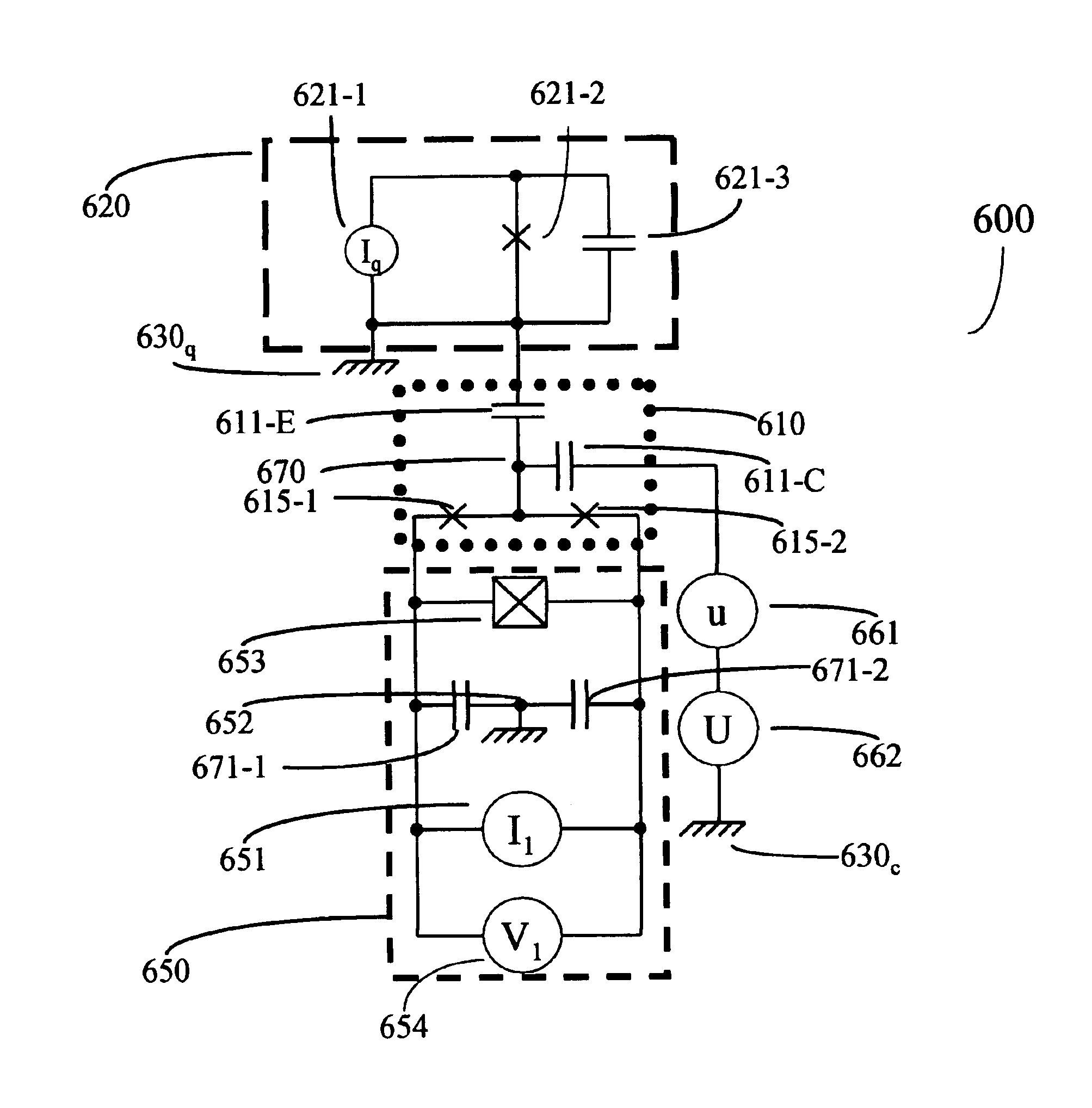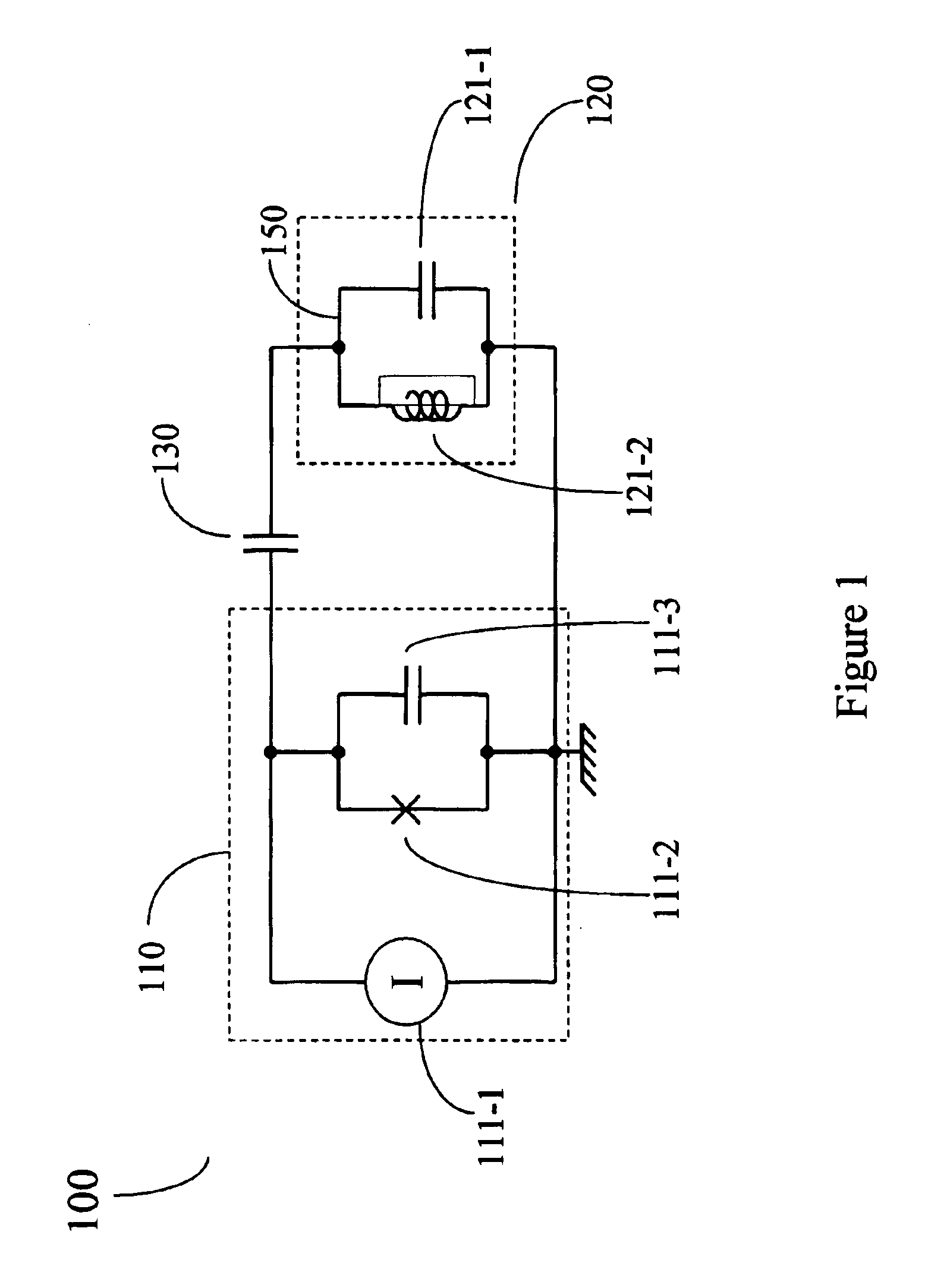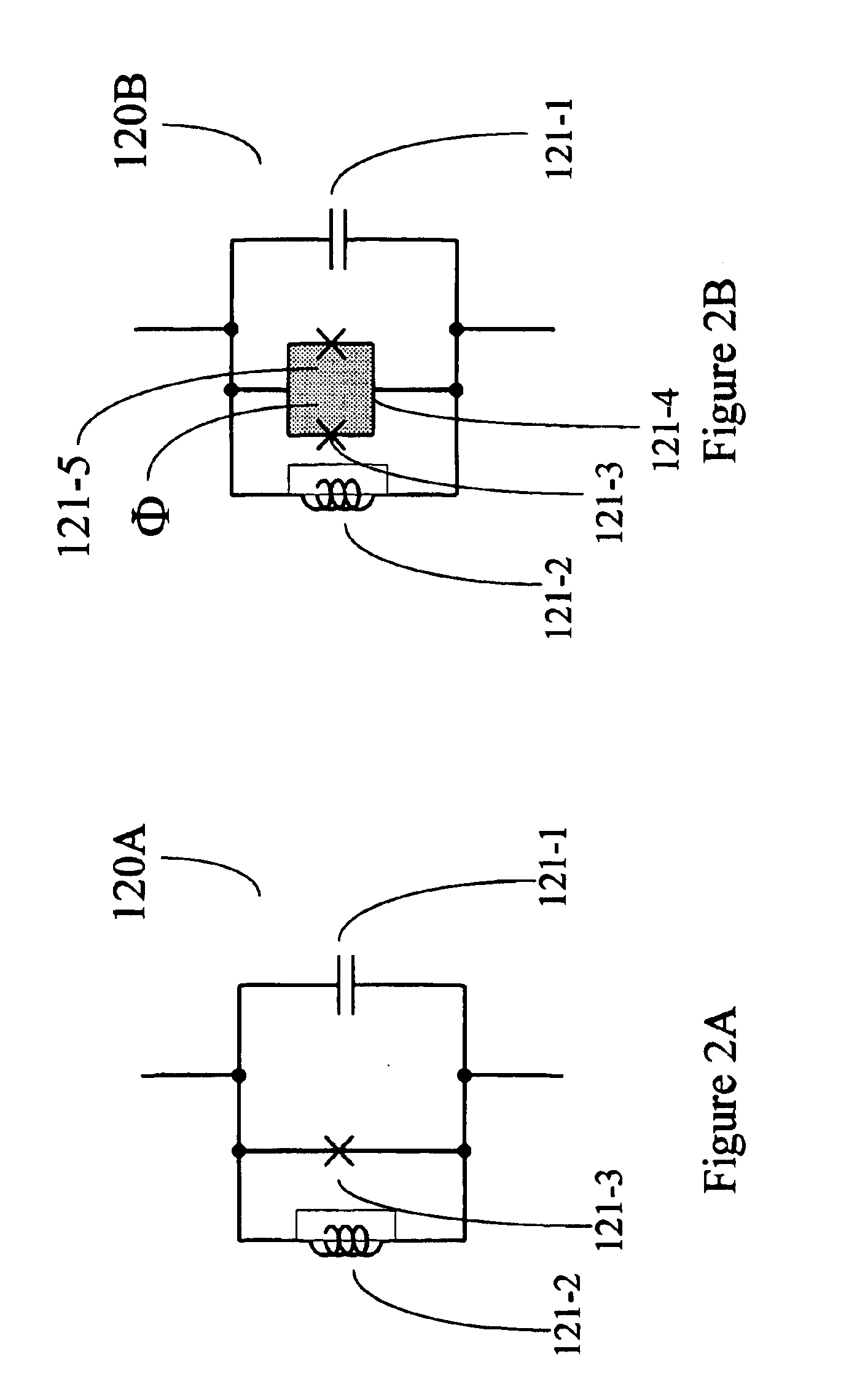Resonant controlled qubit system
a qubit and resonance control technology, applied in the field of quantum computing, can solve the problems of expensive and time-consuming, preventing the development of large-scale quantum computing devices that are practical, and not meeting the requirements of qubits described in these references
- Summary
- Abstract
- Description
- Claims
- Application Information
AI Technical Summary
Benefits of technology
Problems solved by technology
Method used
Image
Examples
Embodiment Construction
[0041]In accordance with the present invention, a circuit for controlling a qubit includes a superconducting qubit having a qubit frequency between approximately 0.8 GHz and 40 GHz and a resonant control system that is characterized by a resonant frequency. This resonant frequency is a function of an effective capacitance of the resonant control system as well as an effective inductance of the resonant control system. Further, at least one of the effective capacitance and the effective inductance is adjustable so that the resonant frequency of the resonant control system can be tuned to a predetermined resonant frequency. The circuit further includes a superconducting mechanism coherently coupled to the superconducting qubit and the resonant control system. The superconducting mechanism is used to coherently couple the superconducting qubit and the resonant control system together. In some embodiments, the resonant control system is superconducting.
[0042]In some embodiments of the p...
PUM
 Login to View More
Login to View More Abstract
Description
Claims
Application Information
 Login to View More
Login to View More - R&D
- Intellectual Property
- Life Sciences
- Materials
- Tech Scout
- Unparalleled Data Quality
- Higher Quality Content
- 60% Fewer Hallucinations
Browse by: Latest US Patents, China's latest patents, Technical Efficacy Thesaurus, Application Domain, Technology Topic, Popular Technical Reports.
© 2025 PatSnap. All rights reserved.Legal|Privacy policy|Modern Slavery Act Transparency Statement|Sitemap|About US| Contact US: help@patsnap.com



